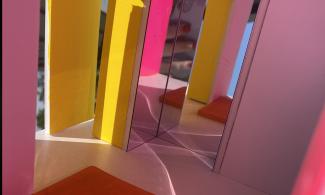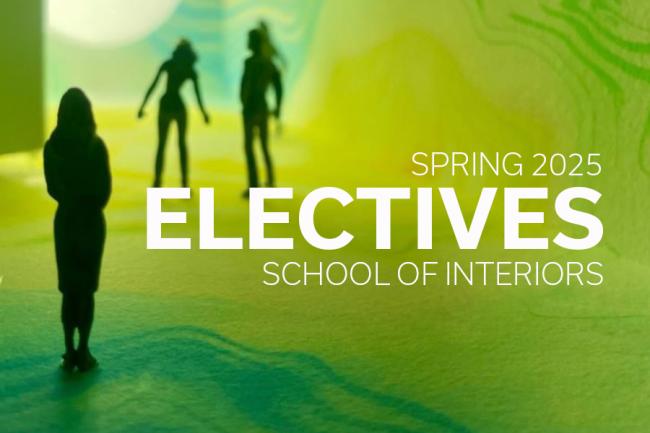Spring 2025 Electives Offered by the School of Interiors
The School of Interiors is offering a range of electives for the Spring 2025 semester, for both Interiors students and non-majors.
ID 359 / 559 (001): Expanding Interior Design
taught by Rebekah Radtke | M/W/F 12:00 – 12:50 p.m.
An introduction for non-majors to the expansive world of interior design, exploring how spaces—ranging from objects to cities—impact our daily lives. Through hands-on activities, lectures, and reflective exercises, students will develop an understanding of how interior environments shape human experience. Students will focus on the body, light, color, materials, and scale from both a personal and global perspective.
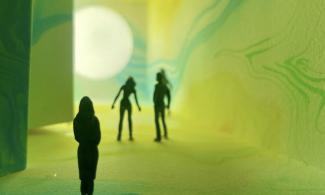
ID 359 / 559 (002): It’s Getting Hot in Here
taught by Renee Martin | Tuesdays 3:30 – 6:00 p.m.
Prerequisites / Required Skills = 3rd , 4th , and grad students in CoD and Landscape Architecture.
Like all other organisms we are sensing beings with thermal limits on our comfort and survival. How flexible are climate zones and comfort ranges for different organisms? How do we perceive variations in the climate? How much agency do we have? This cross-disciplinary elective will investigate how microclimate sensation and data relate. We’ll experiment — in buildings and landscapes — with methods of observation and measurement of temperature, humidity, and airflow; study past models of thermal adaptation; and fabricate and test simple interventions into our local microclimates. With Landscape Architecture guest Tracey Miller. Potential class trip to Mammoth Cave.
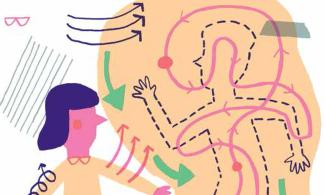
ID 359 / 559 (003): Universal Design in Practice
taught by Erin Alford | T/H 12:30 – 1:45 p.m.
Students will explore the principles and applications of Universal Design as it relates to a variety of design scales, spatial types, and geographic locations with specific attention on inclusive, human focused design for all, regardless of age, ability, or other factors that might impact access or interaction with the built environment. In building awareness of Universal Design, students will engage in a series of exercises and discussions to develop empathy and an understanding of the impact of Universal Design as it relates to their own interests and area of study. As students explore the principles of Universal Design, they will practice applying those principles in designing for human diversity.

ID 359 / 559 (004): Country Houses & Collecting
taught by Patrick Lee Lucas | M/W/F 12:00 – 12:50 p.m.
Education Abroad experience May 12-24, 2025
In this course, students explore the country house form as a product of global migration from its Colonial beginnings to the present day. Students undertake comparative analysis, utilize historical precedent, examine magazines and other visual sources, and investigate across three scales of design (furnishings, finishes, and spaces) to examine the values and ideas imbedded in the country house. In this course, students will place the country house forms in historical context, beginning with precedents in the Veneto and England of the seventeenth century and begore. Students will analyze the elaboration of house forms in the eighteenth through the twentieth centuries in both England in the United States. Throughout the course, students will examine furnishings, finishes, and spaces within houses and their evolutions and concurrences over time. Particular emphasis will be paid to furnishing and finishes as a means of expression. Finally, students will examine visitor practices to country houses that both occlude and celebrate the form as a place of patronage.
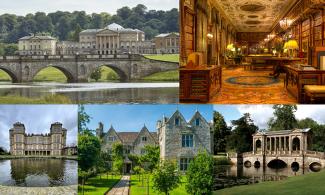
ID 564: Theory + Meaning: Material, Light, Color / ID 359 (005) for Undergraduate Students
taught by Hannah Dewhirst | T/H 11:00 a.m. – 12:15 p.m.
Prerequisites / Required Skills = Upper level or graduate standing. Willingness to experiment.
This course will focus on the effects of material, light, and color in the context of the wide-ranging and inclusive field of “interiors.” Through research and physical investigation, students will study the cultural, historical, and experiential implications of how these elements shape the spaces we live in, how they carry meaning, and how they inherently wield power.
